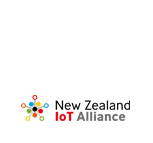Introduction
In the era of technological advancements, cities around the world are transforming themselves into smart and sustainable urban centers. One innovative approach gaining traction is the concept of a Digital Twin—a virtual representation of a physical city, with real-time data integration to help optimise infrastructure and operations.
For Auckland City, embracing Infrastructure 4.0 and integrating the IoT into its Digital Twin can usher in a new era of intelligent urban planning and decision-making. In this blog post, we will explore the transformative role of IoT in creating a Digital Twin of Auckland City and its potential impact on building more livable, workable, and sustainable communities.
Enabling Data-Driven Decision Making
The first and foremost role of IoT in a Digital Twin of Auckland City is its ability to enable data-driven decision making, with a “Data as a Service” ethos. Advanced sensors and IoT devices are already deployed throughout the city to collect real-time data on various infrastructure systems, such as transportation networks, energy grids, water supply, waste management, and more. Currently much of data is in silos, but this data can be better integrated to empower city leaders, communities, and businesses to make informed decisions on urban planning, resource allocation, and service optimization.
Enhancing City Resilience and Sustainability
This project will help Auckland City enhance its resilience and sustainability. Real-time data streams allow city leaders to monitor the performance of critical infrastructure, detect anomalies, and respond proactively to potential issues. For example, in the event of a natural disaster, IoT sensors can provide vital data for emergency responses, reducing response times and minimizing damage. Furthermore, the Digital Twin system can simulate scenarios using its physics-powered Real-time 3D engine, allowing the city to test and optimise energy usage, reduce waste, and better prepare from emergencies.
Improving Transportation and Mobility
One of the key challenges for urban centers like Auckland is efficient transportation and mobility. IoT plays a pivotal role in optimizing transportation systems by providing accurate data on traffic patterns, public transportation usage, and parking availability. With this information, the Digital Twin can simulate different scenarios to identify the most effective solutions for reducing congestion, improving public transit, and promoting active transportation options like cycling and walking.
Empowering Citizen Engagement
The Digital Twin of Auckland City has the potential to foster citizen engagement and collaboration. By making relevant data accessible to the public through user-friendly interfaces and apps, citizens can actively participate in decision-making processes. An interactive 3D model, accessible on all types of devices, will always be more engaging than diagrams and text. Engaged communities can provide valuable feedback and ideas to address local challenges, thereby shaping a city that truly reflects the needs and aspirations of its residents.
Supporting Economic Growth and Innovation
IoT-driven Digital Twins open up new avenues for economic growth and innovation. As the city becomes more data-rich and interconnected, it attracts businesses and entrepreneurs eager to leverage this wealth of information for developing smart city technologies and services. This influx of innovative solutions can lead to the creation of new job opportunities, increased economic productivity, and a thriving ecosystem of technology and entrepreneurship. Many jobs in this ecosystem can be done remotely from regional areas of NZ.
Conclusion
In conclusion, a Digital Twin of Auckland City, powered by IoT and embraced within the framework of Infrastructure 4.0, holds immense potential for transforming the way NZ’s largest city is planned, operated, and experienced. By harnessing the vast amounts of data collected by advanced sensors and IoT devices, Auckland can create a more livable, workable, and sustainable urban environment. By adopting this approach, Auckland City can pave the way for a smarter and brighter future, serving as an inspiring example for other regions across New Zealand and beyond.
About the Author:
Ryan Johnson-Hunt
Metaverse & Emerging Tech Educator, Johnson & Hunt Consulting
Ryan helps organisations and brands leverage the potential of blockchain, Web3, Digital Twin & VR, and ultimately the emerging Metaverse.
Ryan offers customised presentations and workshops that explore how these technologies are already being used to solve business problems and identify new opportunities. Through hands-on activities, Ryan can guide teams on setting up their own crypto wallets, transferring assets, and minting and sharing NFTs.






